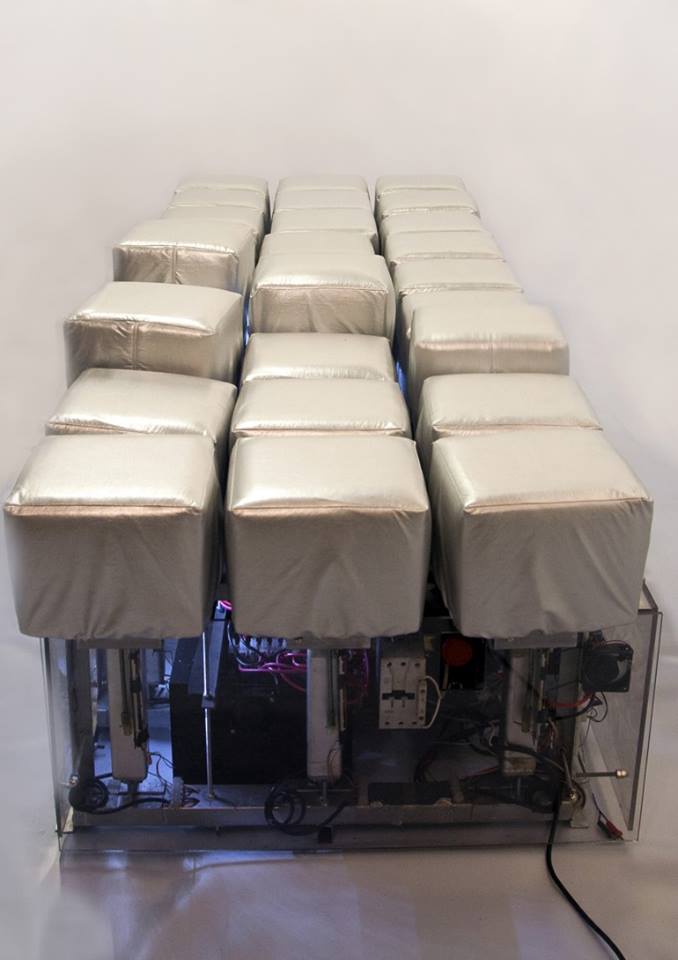
Dorian Gaudin
The coffee cup spring
The monotone repetition of the movement created by the conveyor belt recalls the pace and the landscape of animation or video games. As an extension of the conveyor, several geometric and orthogonal motifs evoking a Tetris composition are slotted together and suggest the shapes of a table, a chair or stairs. The objects are exposed on thin metal structures with fringed ends, and seem to peel off from their construction, as if they were undressing and exchanging skins, depriving themselves of sculptural depth and allowing only the surface to emerge. The technique developed by the artist to produce the sculptures inverts the usual steps of printing: first the pattern is created, then the background to which the fiberglass support is apposed. The pieces are therefore ripped off their mold, revealing their final texture, and the motif on every sculpture seems to remain the same, yet is altered by the shape of the object itself. A series of wall works using this procedure extends from the installation into the gallery space.










